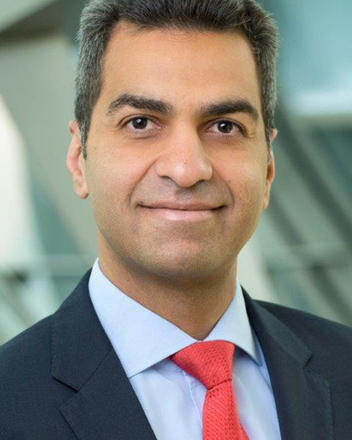How close are we to treasury-as-a-service?

How does access to emerging technology and customer demands translate into a treasury-as-a-service offering? Views differ on industry readiness, customer demands and the acceptance of standards.
Banking-as-a-service (BaaS) has been a major topic of conversation in financial services circles of late. The rise of open application programming interfaces (APIs) and the cloud, and the evolution of open banking, have enabled many organisations to deliver a 24/7, on-demand, banking service, most notably in consumer banking.
These developments usually involve non-financial providers, such as a retail chain, offering ‘banking services’ such as payments or lending to their clients accessed ‘...as-a-service’.
These developments have not gone unnoticed in the corporate banking space. Even since the first corporate treasurer unboxed their first iPad, they have been asking for on-demand access to treasury services rather than the intraday, batch delivery and traditional banking hours of old.
Treasurers are looking for their user experiences in the retail world to be emulated in the corporate world
But how does all this technology and customer demand translate into a treasury-as-a-service (TaaS) offering? The answer depends on who you ask. Views differ on industry readiness, customer demands and the acceptance of standards.
Two key demands
For the most part, treasurers have two main asks: to automate previously manual processes; and enable real-time access to data for forecasting and decision-making.
“Real-time access and visibility is high on the demand list from treasurers. Increasingly, treasurers are looking for their user experiences in the retail world to be emulated in the corporate world,” says Karen Braithwaite, global head of transaction banking at Barclays Corporate.
Shahrokh Moinian, Europe, the Middle East and Africa wholesale payments head at JPMorgan, adds: “Treasurers are, and have been, demanding automation of current mechanical tasks. This is not something that is new.” Some of these “not new” requests around efficiency and automation include cash visibility, pooling automation and management of certain foreign exchange hedges that do not justify a dealing room intervention, for example.
However, the number one priority for corporate treasurers remains accurate cash forecasting.
“Forecasting has been the $30m question for years. How do I get more accurate in my forecasting? And how do I use technology or other means of doing it? Now, it’s really at the top of the corporate treasurers’ list, because they see that providers are going to them with certain solutions,” says Mr Moinian. “Thanks to technology under the banner of TaaS, we’re getting closer to that goal.”
Unlocking value
But what is the difference between enhancements in treasury services and an ‘...as-a-service’ offering?
According to Enrique Velasco-Castillo, lead analyst, payments and transaction banking at Boston Consulting Group (BCG), interest in developing TaaS offerings is very much driven by the move towards using more APIs within the industry, combined with the internal transition within banks towards cloud-based architectures and industry standards, such as ISO 20022.
“When you combine those two elements, TaaS is essentially the use of cloud- and API-based technologies to deliver treasury solutions that for customers enable close integration with their enterprise resource planning or treasury management systems (TMSs), as well as with procurement software,” he says.
It is that close integration that, in turn, enables the automation of processes within the treasury function that traditionally have been manual, time-consuming and error-prone. “[Its] things like payments, reconciliation, cash management, liquidity management and pooling,” says Mr Velasco-Castillo. “So when you have a technology stack, where it is possible to integrate very closely the knowledge and services of your bank with your internal systems as a firm, as a treasurer and as a company, that suddenly unlocks a lot of value.”
That value lies in the time and effort saved on transactional tasks, coupled with advanced analytics, enabling treasurers to move from being tactical and reactive in responding to challenges to a longer-term, more strategic horizon for managing risk and liquidity, he adds.
A seamless connection
One agile new entrant to the global transaction banking world is not a buzzy new fintech provider, but investment banking powerhouse Goldman Sachs.
Launched in June 2020 in the US and in the UK this summer, Goldman Sachs Transaction Banking has attracted more than 250 clients, and $35bn in deposits. This business was developed from the start ‘...-as-a-service’, says Hari Moorthy, partner, global head of transaction banking at Goldman Sachs.
“Banking-as-a-service platform is an ability for a business or corporation, whether a treasury organisation or its business units, to seamlessly connect into the underlying banking infrastructure, using APIs,” he says.
This seamless connection allows corporates to create accounts, delete accounts, manage accounts, create virtual accounts, make payments, receive payments, update their status, deposit balances and so on instantly and in real time. “You could do almost anything that you would otherwise require a lot of people, a lot of batch processing, or a lot of portals to log into. You don’t need all of that anymore,” adds Mr Moorthy.
That is what he calls “version number one”: the ability to do anything a corporate would do with transaction banking, but with APIs and in real time. Versions numbers two and three are more wide-ranging. “Imagine it’s no longer just treasury — it’s a corporate wanting to install all payment services, so that it facilitates its client interactions smoothly,” he says. “This is removing multiple layers of inefficiency and actually getting to real time across the board in a very simple manner, and bringing in all these tools that pay bills to clients of clients.”
Eliminating the old
Goldman Sachs started building its nascent transaction banking business in 2018 using a highly secure public cloud, APIs and standard ISO formats, used both internally and externally.
“We spent a lot of time deliberating about having a real-time data service,” says Mr Moorthy. “If you have a lot of mainframe systems, the APIs will connect to it, but everything is old and manual. We have a distinct advantage in that everything underneath is all real time and data-centric.”
Because of this, the bank’s services can be seamlessly embedded with its clients, who can then embed those services with their own clients. Mr Moorthy cites the recent partnership with payments processor Stripe that allows the fintech giant to offer TaaS offerings to its own clients. One such client of Stripe is the online retailer Shopify. (Stripe also partners with Citi as part of the same offering.)
Despite partnering with Stripe, Citi avoids using the term ‘...as-a-service’ to describe its own proprietary treasury offerings.
Treasurers are, and have been, demanding automation of current mechanical tasks. This is not something that is new
“The industry is undergoing tremendous change,” says Sandip Patil, Asia-Pacific head of liquidity management solutions and head of sales for financial institutions, treasury and trade solutions at Citi. “Online commerce, digital commerce, some of the digital capabilities, some of the new technologies, like APIs and fintech, they’re changing the world completely for our corporate clients and for our institutional clients.”
However, according to Mr Patil the pace of change differs depending on which and what type of client the bank is talking to and in which geography.
“The role of treasurer changes from company to company,” he says. “That’s probably the reason why the industry gets confused [on TaaS] depending on who you speak to. As far as we are concerned, we understand because we have a big, small and medium-sized enterprise business. In that business, the definition of treasurer is relatively simple. Companies can outsource a set of activities that are mundane, that are repetitive and that are non-value-adding. So that definition works perfectly in that segment. If I take the Fortune 500 companies, I don’t think that definition will uniformly apply to them because their scale has enabled the role of treasurer to evolve more strategically, and larger companies also tend to have their own regional treasury centres and in-house treasury support.”
Consumer relevance
According to Peter Klein, chief technology officer at treasury platform provider FinLync, the buzz around TaaS is influenced by the impact of open banking in the consumer space.
“This regulated world of open banking, happening in the consumer space, works well,” he says. “We’re not seeing that model being adopted in the corporate space, in the treasury space. So what’s different in the treasury space is it’s not regulated open APIs. Rather, it’s a different world of premium APIs and premium API offerings, which the banks don’t want to reveal to other banks.”
Mr Velasco-Castillo of BCG weighs in on the disconnect regarding what the industry considers is and is not TaaS. “I think that disconnect is not necessarily on the definition itself, but rather on the capabilities that are needed to provide TaaS in the first place,” he says.
Historically, banks have grown inorganically and have accrued a large number of disparate systems, technologies and technology stacks, dispersed across geographies. “This complexity means that even within banks, the treasury function faces a challenge of not being up to speed and digital enough to serve the bank itself, let alone be able to even expose those services to third parties outside of the bank,” adds Mr Velasco-Castillo.
Yet, according to Matthew Giannotti, head of transaction services sales for financial institutions and professional services at NatWest, APIs are “the word of the day”.
“A lot of banks have somewhat legacy platforms. And what [APIs do] is bridge the gap between old and new realistically,” he says. While incumbent banks are moving towards offering more services delivered via API integration and cloud platforms, the availability of this technology has opened up the treasury to “other players, who are now able to pick off niche services. But rather than having to sign up for various different platforms, having multiple logins and so on, what they do is basically host them all in one single place, and tap into the various different services,” he adds.
However, the journey from batch processing, manual interventions and host-to-host connectivity to a more seamless and on-demand service is far from over, says Aurélien Viry, global head of payments and cash management at Société Générale (SocGen).
In the TaaS journey, one familiar barrier has come up: standards. And even the discussions around standards differ depending on who is speaking. “There is still a huge challenge ahead in terms of standardisation,” says Mr Viry. “A very large corporate will continue to use a TMS, which requires standardisation co-operation between TMS editors and banks, and probably some standardisation among banks. We are in the middle of a long journey.”
The standards problem
According to FinLync’s Mr Klein, most treasury functions at banks were built in silos with no desire nor need to understand the underlying internal infrastructure of corporate clients. As a result, it is hard to determine which APIs will be useful and which should be built out because of a lack of agreed-upon messaging standards.
“What are the messaging standards? This is a big topic at the moment. And it’s sort of a Wild West out there in terms of messaging standards,” says Mr Klein. “ISO XML is not suitable for the API world; it’s not designed for the real-time treasury world.”
He argues that the banks are failing to agree on any data standards, and predicts that the big banks will offer corporates their own API standard to access rich data offerings.
“However, that messaging standard, that data, needs to be adopted by the corporate,” he adds. “If you think about it, every bank is creating its own messaging standards; and it’s not like in the cash management world, where it’s a payment message, or bank statement and a status message. Banks are unlocking lots of API endpoints. Now you’re in this new world where there’s a vast number of standards and data structures, and no standardisation whatsoever.”
However, not everyone shares this view. Goldman Sachs’ Mr Moorthy offers what he calls “a bit of a controversial opinion”.
The role of treasurer changes from company to company. That’s probably the reason why the industry gets confused [on TaaS]
“The standards exist. They’re just not being adopted,” he says. “We have adopted ISO standards, ISO standards have existed forever, with respect to all of the things that a transaction bank or treasury bank should offer. They just need to be adopted. We’re not creating anything proprietary.”
Right now the transaction banking world is dealing with digitalisation of services, automation of processes and increasing demand for real-time access. Players such as Goldman Sachs, eager to grab a slice of the corporate banking market, have built their platforms from scratch, fully embracing the digital-first, open-API world that has transformed the consumer space. Others, such as Citi or JPMorgan, see the journey to true TaaS as a long road that is far from over.
Before most corporates realise the promise of seamlessly embedding treasury services from their banking partners with their own clients, TaaS might finally kill off the use of Microsoft Excel. “Excel remains one of the best friends for treasurers,” says SocGen’s Mr Viry. “And I think TaaS has the greatest scope to help them get rid of Excel.”




